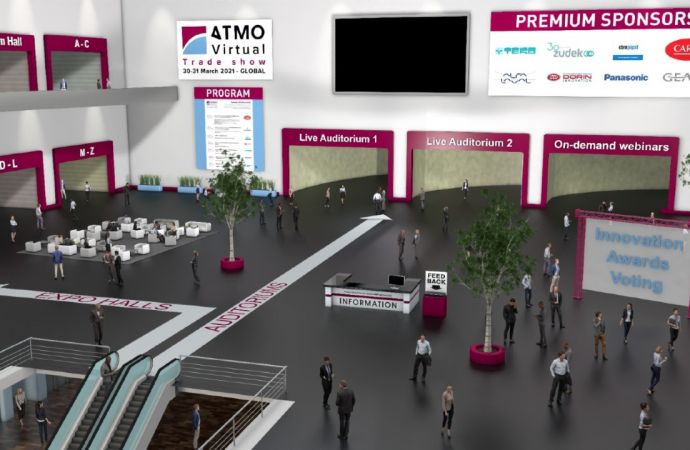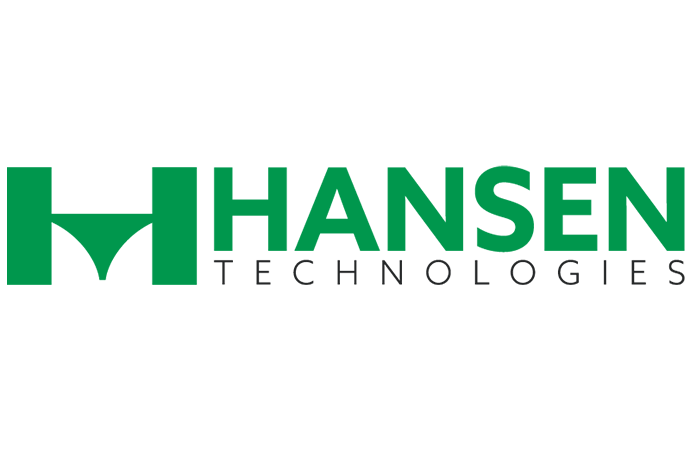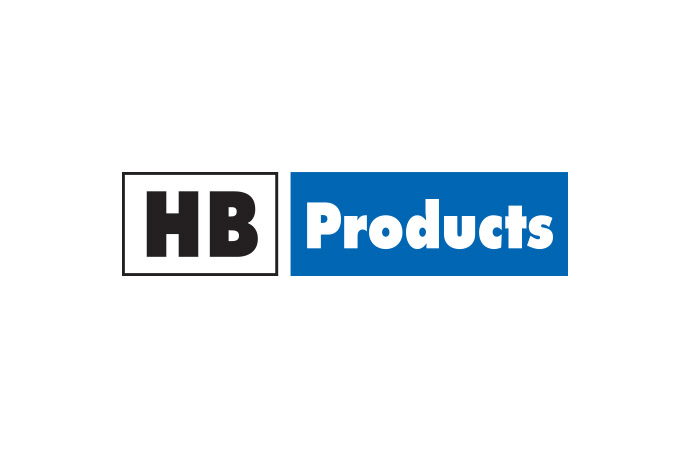More than 10 academic papers presented at SHC 2012 conference in California addressed the latest advances in research, development, field-testing and practical applications of solar cooling with absorption technology. Today, ammonia21.com presents an overview of the ammonia-relevant proceedings.

In July 2012, researchers from industry and academia had an opportunity to present their latest research of solar thermal driven absorption technology. The International Conferences on Solar Heating and Cooling for Buildings and Industry (SHC 2012) was held in San Francisco and attracted 220 participants from 31 countries.
The conference program consisted of a total of 120 presentations, including 16 keynote lectures and the launch of the IEA roadmap on Solar Heating and Cooling. About 90 scientific posters were continuously displayed throughout the conference.
The conference proceedings are now published in Elsevier’s Energy Procedia. Out of all papers presented at the SHC 2012, ammonia21.com identified the proceedings related to absorption with ammonia as a refrigerant. In today’s article we bring an overview of these academic papers and their abstracts.
Solar thermal driven absorption cooling with ammonia
Analysis of the performance of a GAX hybrid (Solar - LPG) absorption refrigeration system operating with temperatures from solar heating sources by M. A. Barrera at al.
This paper presents the analysis of the experimental tests performed with an absorption refrigeration advanced Solar-GAX system, designed for 10.5 kW (3 Ton) of cooling using ammonia-water mixture. The system designed for operation at heat source temperatures of around 200°C, consists of an absorber and generator of a falling film type and air cooled finned tube condenser and absorber, being an option for areas with water scarcity. Heat source temperatures of 160°C were established to simulate the conditions of using solar thermal concentrating technology to supply heat the system, this means the system operating at partial load. Cooling capacities from 3 to 7 kW were obtained, with an average coefficient of performance (COP) of 0.37. Thermal stability was rapidly reached, after only 15 minutes of operation.
Development of a 5 kW cooling capacity ammonia-water absorption chiller for solar cooling applications by F. Boudéhenn et al.
The development of a small capacity absorption chiller and the numerical and experimental results are presented in this paper. The prototype is a thermally driven ammonia-water absorption chiller of 5 kW cooling capacity for solar cooling applications. The chiller was developed in an industrial perspective with a goal of overall compactness and using commercially available components. In order to characterize various component technologies and different optimization components, the prototype is monitored with temperature, pressure and mass flow rate accurate sensors. The resulting chiller, characterized by a reduced load in ammonia-water solution and the use of brazed plate heat exchanger, has shown good performance during the preliminary tests. A comparison with the expected numerical results is given.
Solar driven cold rooms for industrial cooling applications by M. Berger at al.
In this paper activities of a German consortium currently developing a standard solar driven cold room for industrial cooling applications is presented. Within the recent EU co-funded project SOLERA, ISE and ISG had gathered experience in the successful operation of the solar cooling technology. Main components of the SOLERA demonstration system are a linear Fresnel collector providing the driving heat at temperatures up to 200 °C for two cascading ammonia water absorption chillers, which produce cold temperatures down to -12 °C, as well as ice storages for peak shifting. In the current project AgroKühl, which is co-funded by the German Federal Ministry of Education and Research, a consortium of five partners, among them the company KRAMER GmbH and ISE, constructed a cold room, that will now be driven by a similar solar cooling system. Further technical details, operation experience and measurement data from the SOLERA demonstration system in 2011 as well as a description of the new system will be presented in the paper.
Solar cooling systems utilizing concentrating solar collectors - An overview by O. Ayadi et al.
The objective of this review article is to draw a picture about a promising solar cooling concept, based on the use of concentrating solar collectors, and to define the aspects that need to be considered in future developments. The following topics are covered: an overview of solar cooling systems utilizing concentrating solar collectors worldwide; the reasons behind the selection of these solar collection technologies for solar cooling applications; a quick assessment of the main performance figures for the different solar cooling schemes based on Monte Carlo simulations; the technical requirements of the technologies for future developments. Air-conditioning and refrigeration facilities driven by concentrating solar collectors are still infrequent and the outcomes of this review clearly present the small but steadily growing market of solar cooling systems coupled with concentrating solar collection technologies.
Life Cycle Assessment performance comparison of small solar thermal cooling systems with conventional plants assisted with photovoltaic by M. Beccali et al.
Starting from the results obtained in the IEA SHC Task 38 framework for the LCA of small solar assisted heat driven chillers, the application of such methodology has been extended to systems with a conventional compression chiller assisted by a photovoltaic plant. This study aims to provide a more comprehensive investigation through a comparison of these two families of solar assisted cooling systems (with solar thermal or PV), which is an important topic for studies concerning the research of effective and environmentally friendly systems that exploit solar radiation for cooling and heating purposes. In hot climates, the systems with the PV grid connected plant performed best. Anyway, a comparison of this system with the other systems is not meaningful because the strength of the solar thermal H/C system is the ability to reduce the dependence from the electric grid and to avoid peaks, overloads and power quality variations. Thus, two more configurations were investigated to further define the PV assisted systems, which minimize their interaction with the grid through the use of electricity storages. These systems performed worse than the PV grid connected systems and the solar thermal assisted systems in nearly all the analysed cases.
The conference program consisted of a total of 120 presentations, including 16 keynote lectures and the launch of the IEA roadmap on Solar Heating and Cooling. About 90 scientific posters were continuously displayed throughout the conference.
The conference proceedings are now published in Elsevier’s Energy Procedia. Out of all papers presented at the SHC 2012, ammonia21.com identified the proceedings related to absorption with ammonia as a refrigerant. In today’s article we bring an overview of these academic papers and their abstracts.
Solar thermal driven absorption cooling with ammonia
Analysis of the performance of a GAX hybrid (Solar - LPG) absorption refrigeration system operating with temperatures from solar heating sources by M. A. Barrera at al.
This paper presents the analysis of the experimental tests performed with an absorption refrigeration advanced Solar-GAX system, designed for 10.5 kW (3 Ton) of cooling using ammonia-water mixture. The system designed for operation at heat source temperatures of around 200°C, consists of an absorber and generator of a falling film type and air cooled finned tube condenser and absorber, being an option for areas with water scarcity. Heat source temperatures of 160°C were established to simulate the conditions of using solar thermal concentrating technology to supply heat the system, this means the system operating at partial load. Cooling capacities from 3 to 7 kW were obtained, with an average coefficient of performance (COP) of 0.37. Thermal stability was rapidly reached, after only 15 minutes of operation.
Development of a 5 kW cooling capacity ammonia-water absorption chiller for solar cooling applications by F. Boudéhenn et al.
The development of a small capacity absorption chiller and the numerical and experimental results are presented in this paper. The prototype is a thermally driven ammonia-water absorption chiller of 5 kW cooling capacity for solar cooling applications. The chiller was developed in an industrial perspective with a goal of overall compactness and using commercially available components. In order to characterize various component technologies and different optimization components, the prototype is monitored with temperature, pressure and mass flow rate accurate sensors. The resulting chiller, characterized by a reduced load in ammonia-water solution and the use of brazed plate heat exchanger, has shown good performance during the preliminary tests. A comparison with the expected numerical results is given.
Solar driven cold rooms for industrial cooling applications by M. Berger at al.
In this paper activities of a German consortium currently developing a standard solar driven cold room for industrial cooling applications is presented. Within the recent EU co-funded project SOLERA, ISE and ISG had gathered experience in the successful operation of the solar cooling technology. Main components of the SOLERA demonstration system are a linear Fresnel collector providing the driving heat at temperatures up to 200 °C for two cascading ammonia water absorption chillers, which produce cold temperatures down to -12 °C, as well as ice storages for peak shifting. In the current project AgroKühl, which is co-funded by the German Federal Ministry of Education and Research, a consortium of five partners, among them the company KRAMER GmbH and ISE, constructed a cold room, that will now be driven by a similar solar cooling system. Further technical details, operation experience and measurement data from the SOLERA demonstration system in 2011 as well as a description of the new system will be presented in the paper.
Solar cooling systems utilizing concentrating solar collectors - An overview by O. Ayadi et al.
The objective of this review article is to draw a picture about a promising solar cooling concept, based on the use of concentrating solar collectors, and to define the aspects that need to be considered in future developments. The following topics are covered: an overview of solar cooling systems utilizing concentrating solar collectors worldwide; the reasons behind the selection of these solar collection technologies for solar cooling applications; a quick assessment of the main performance figures for the different solar cooling schemes based on Monte Carlo simulations; the technical requirements of the technologies for future developments. Air-conditioning and refrigeration facilities driven by concentrating solar collectors are still infrequent and the outcomes of this review clearly present the small but steadily growing market of solar cooling systems coupled with concentrating solar collection technologies.
Life Cycle Assessment performance comparison of small solar thermal cooling systems with conventional plants assisted with photovoltaic by M. Beccali et al.
Starting from the results obtained in the IEA SHC Task 38 framework for the LCA of small solar assisted heat driven chillers, the application of such methodology has been extended to systems with a conventional compression chiller assisted by a photovoltaic plant. This study aims to provide a more comprehensive investigation through a comparison of these two families of solar assisted cooling systems (with solar thermal or PV), which is an important topic for studies concerning the research of effective and environmentally friendly systems that exploit solar radiation for cooling and heating purposes. In hot climates, the systems with the PV grid connected plant performed best. Anyway, a comparison of this system with the other systems is not meaningful because the strength of the solar thermal H/C system is the ability to reduce the dependence from the electric grid and to avoid peaks, overloads and power quality variations. Thus, two more configurations were investigated to further define the PV assisted systems, which minimize their interaction with the grid through the use of electricity storages. These systems performed worse than the PV grid connected systems and the solar thermal assisted systems in nearly all the analysed cases.
MORE INFORMATION
Related stories










_1522327086.png)

